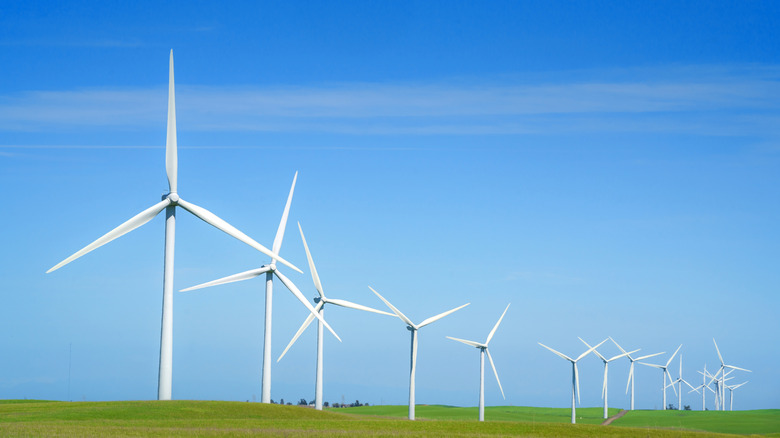What Happens To Used Windmill Blades? You Might Be Surprised
The power of the wind is one of the most widely used renewable energy resources, going back to the earliest known windmills in Persia, over 1,000 years ago. Today, wind power has come a long way. We have upgraded from windmills, which were literally wind-powered mills for processing grain, to wind turbines, which use the force of the wind to spin a generator and produce electricity which is distributed to community grids.
The United States currently has over 75,600 wind turbines in operation, according to the USGS. Each new generation of turbines has been bigger than the last, with the average turbine now exceeding 300 feet in height, and wielding blades over 200 feet long. Bigger turbines generate more power, but they also generate more waste. The blades take a beating from the elements and must be changed out every 20–25 years. Severe damage, which can be dealt by bird strikes, lighting, or even damage done in transporting and assembling turbine parts, can also force blades into an early retirement. Disposing of all these old blades is a big challenge.
Unfortunately, most used wind turbine blades end up in landfills, which detracts from the "green" aspirations of wind power. A 2015 study published in the journal Waste Management projects 47 million tons of turbine blade waste will pile up by the year 2050. Fortunately, a bold plan for mass-recycling retired blades is finally coming to fruition.
Recycling turbine blades is a complex business
There's a big problem with recycling wind turbine blades. Modern turbine blades are predominantly made from fiberglass, a type of composite material. Fiberglass is a blend of glass and plastic, and if you've ever been to a recycling center, you'll know that glass and plastic must be separated before recycling because the process for each is different. The problem with fiberglass is that the glass and plastic used are in microscopic strands, making them impossible to separate. However, one company has recently found a way to turn fiberglass into something wholly unexpected: cement.
Starting in 2020, environmental services company, Veolia, decided to tackle the problem of recycling turbine blades. They considered the makeup of the blades on the chemical level, deeper than the concepts of just glass and plastic, and came to a breakthrough realization. The primary component of the blades is actually silicon dioxide (silica), the main ingredient in glass.
Cement is traditionally made using limestone, but it is possible to create an alternative version by swapping a portion of limestone for silica. Wind turbine blades are the ideal product to get this silica from because they also contain a bit of resin, which can be used as fuel for the cement-making process, reducing fossil fuel use. Other companies have turned fiberglass into construction materials and other fiberglass products, and although these recycling processes are just getting off the ground, they offer a promising alternative to creating literal tons of landfill waste.

